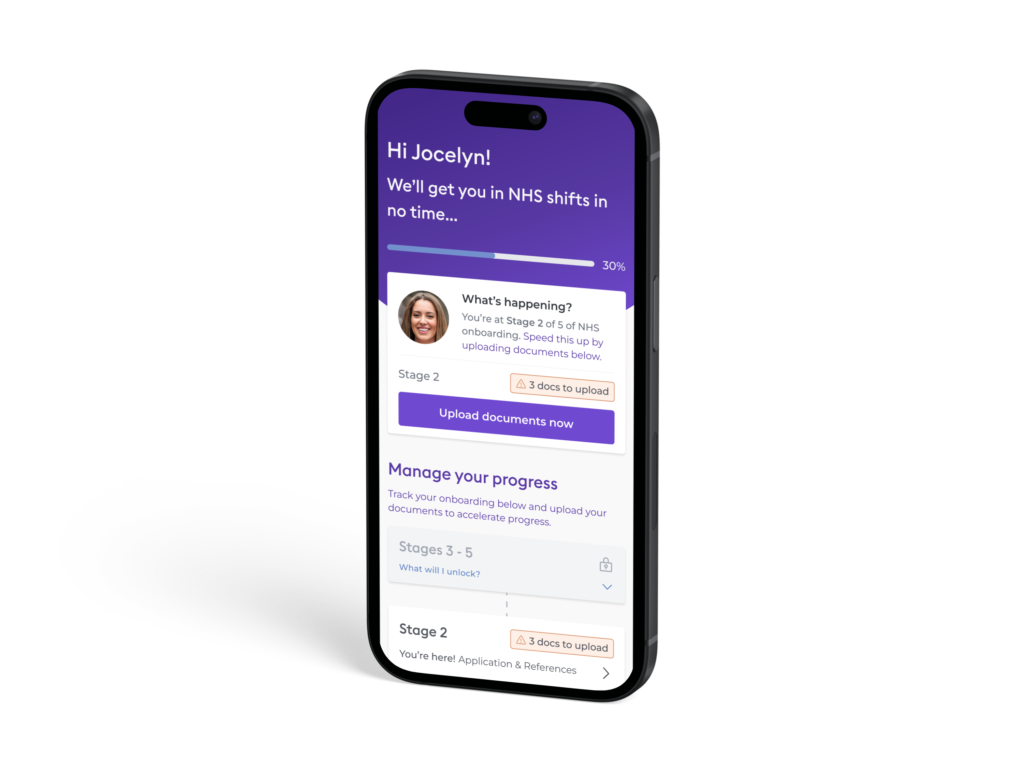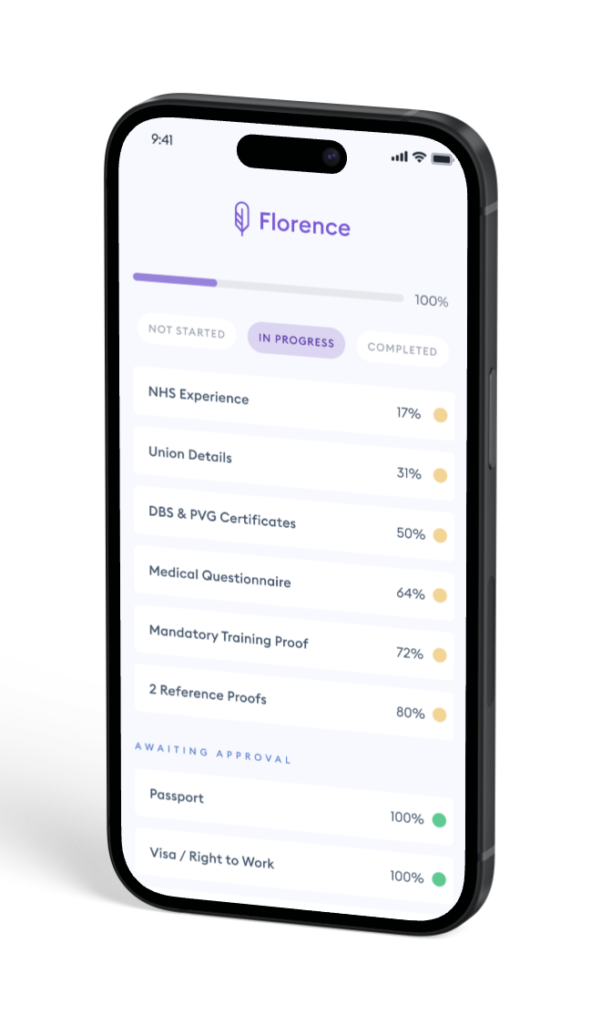Increased NHS Professional Adoption by 127%

Goals
• To drive engagement of NHS onboarding
• Increase volume of completed registrations
Methods
User research, workshops, UX patterns, user journeys, iterative design
Challenges
Urgency to ship features often leads to poor decisions e.g. reusing unsuitable existing flows
Project Outcomes
More than twice the % of registered NHS nurses in the first quarter of feature launch
From a ~79% dropoff rate during onboarding to less than 20% within six weeks
Significant reduction in Ops time spent on onboarding due to new self-serving flow
Introduction
In May 2023, as the UK’s social care sector began to recover from the pandemic, Florence identified a strategic opportunity within the NHS. The vast pool of talent offered by NHS Professionals (over 180,000 healthcare workers) presented a significant growth potential. However, successfully onboarding these professionals necessitated a more streamlined approach than the document-heavy process we currently had for social care workers.
Phase 1: Initial Launch and Missed Opportunities
Prioritising speed, the initial solution involved repurposing our existing social care onboarding flow to accommodate NHS professionals. This flow was already incredibly document-heavy, and would be even more so for NHS, however urgency was paramount for the business. To address any issues, a dedicated Ops team was established in Birmingham to provide personalised guidance throughout the onboarding process. While functional, the Product team recognised the potential for a more user-centric solution – an app-driven onboarding experience that empowered professionals with greater control, transparency, and a smoother journey. And of course, less dependency on our Ops team.
User Research: Uncovering Pain Points
User research had long shown that social care workers experienced significant challenges with the existing onboarding journey. Having hired a brilliant UX researcher earlier that year, it was clear from our growing insights repository that our workers found it overwhelming, and many mentioned it took months to complete. We envisioned a self-serve journey that could streamline the experience, providing professionals with real-time progress tracking and the autonomy to complete tasks at their own convenience.
“You have to have all the information, all the documents. It just seemed that there was an awful lot.. I got to the point where I just thought, I’m not gonna bother.”
– Ella, intensive care nurse onboarding with Florence

Collaboration and Strategic Alignment
The NHS Product Manager aligned with this vision, and we collaborated with the Ops team to map out potential improvements.
Following on from these discussions, having thoroughly understood the Ops flow, I facilitated collaborative workshops to map out where our app could step in to expedite or improve the current onboarding journey (see Figjam below). I’d even proposed leveraging existing UX patterns from other areas of the app to expedite development.
Challenges and Missed Goals
Despite these efforts, securing buy-in proved difficult. The Ops team’s incentive structure, based on successfully onboarded individuals, potentially conflicted with our proposed self-serve app model. While the Ops-first approach offered a seemingly quick launch solution, it presented long-term challenges with scalability, logistics and hindered broader digital adoption.
This dedicated Ops approach resulted in a concerning 79% bounce rate for the NHS onboarding flow for that quarter alone. This highlighted the need for a strategic rethink, and as design lead, I reflected on how I might’ve better highlighted the value proposition of our concept in order to persuade stakeholder appetite.
Phase 2: Strategic Shift and Onboarding Optimisation
Following a comprehensive business review, a new Head of NHS was introduced months later who quickly prioritised app-driven onboarding, with targeted Ops support as needed. Our focus now shifted towards addressing three core user pain points:
1. Document Overload
We implemented a staged onboarding journey, breaking down the process into manageable steps to reduce cognitive load and present tasks sequentially.
2. Progression Clarity
Trust-specific checks were integrated into the main onboarding flow, providing a transparent view of the entire process.
3. Long Game, Zero Access
To incentivise completion and showcase the value proposition of Florence, professionals were granted access to view available shifts as they progressed through the onboarding stages.
Results and Conclusion
The staged onboarding model demonstrably improved the onboarding experience, leading to a significant increase in the number of compliant NHS professionals ready to fill shifts. Additionally, Ops hours were reduced by 38% due to the streamlined app-driven process. These improvements have positioned Florence as a strong contender in the NHS staffing landscape across the UK.
“I prefer this [onboarding approach], basic initial information before going on to a fuller application once you have decided you want to go ahead..”
– Julie, intensive care nurse onboarding with Florence










